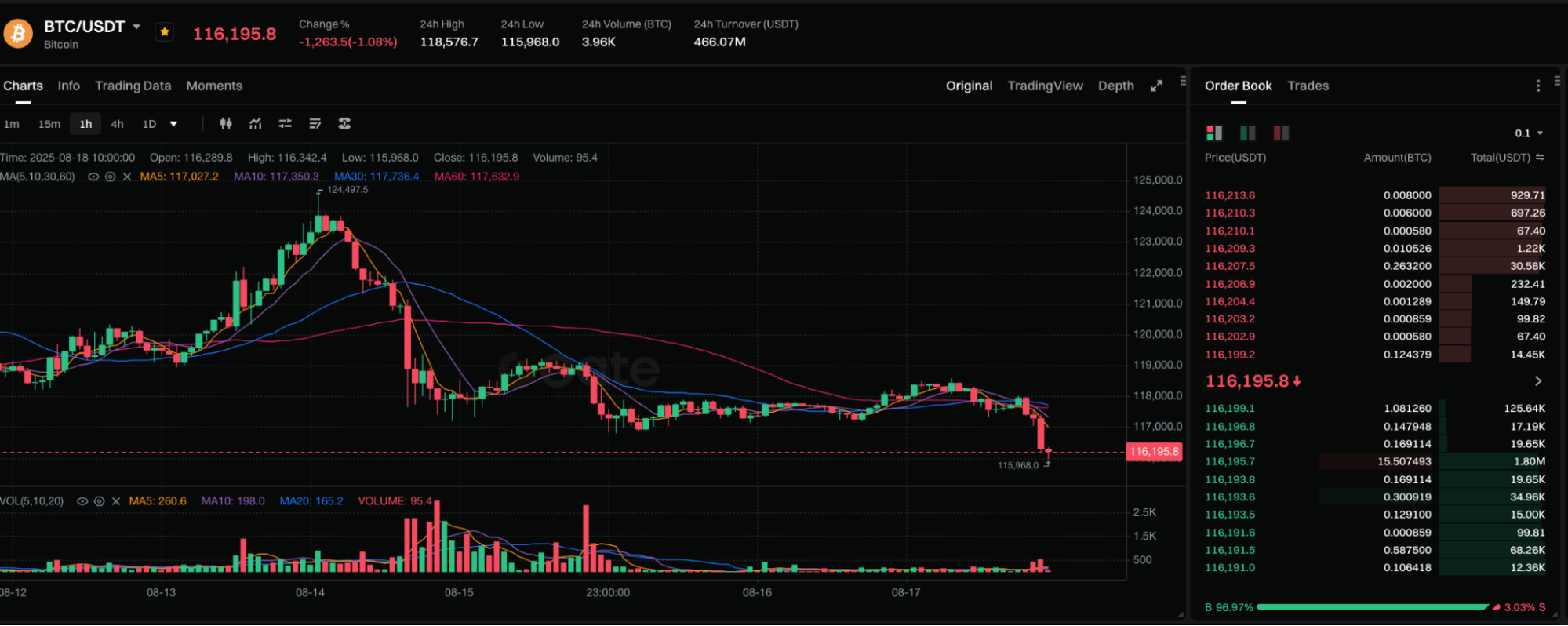Bitcoin Price Prediction: BTC Hovers Around $120,000 Amid Bull-Bear Tug of War
Market Overview: BTC Trading Sideways

Chart: https://www.gate.com/trade/BTC_USDT
Bitcoin has recently been oscillating around the $120,000 mark. While there have been several attempts to break higher, the market has largely remained in a consolidation phase. This level not only represents strong market support but also exposes concerns about weak bullish momentum. For investors, such consolidation often hints that a new market trend may be brewing.
Policy Tailwinds and Capital Inflows
One of the main drivers behind Bitcoin’s price action is the changing macro policy landscape. As countries around the globe gradually relax crypto asset regulations, more financial institutions are adding Bitcoin to their investment portfolios. ETF inflows have continued to rise, further boosting market confidence in Bitcoin. Progress in stablecoins and payment systems has also indirectly contributed to rising demand for Bitcoin.
From an investor’s perspective, these policy signals are making Bitcoin increasingly resemble gold as a safe-haven asset. Especially against the backdrop of a more accommodative monetary policy in the U.S. and Europe, capital is seeking a new store of value, and Bitcoin is emerging as a top candidate.
Technical Resistance and Support Analysis
On the technical front, $120,000 is a key threshold. If Bitcoin can break above and hold this level, it could open the door to further upside, with targets potentially reaching $130,000 or higher. However, a short-term pullback is possible if bullish momentum falls short, with support found around the $110,000 area.
Trading volume is also a critical indicator to watch. When upward price moves occur alongside increasing volume, it shows that capital is actively entering the market. Conversely, declining volume calls into question the sustainability of any breakout.
Potential Risks and Volatility
Even as Bitcoin trades sideways at elevated levels, risks persist. First, leverage across the market is high, and any large-scale liquidations could trigger sharp, short-term declines. Additionally, uncertainty in macroeconomic data could add to Bitcoin’s volatility. For example, if inflation or employment data significantly exceed expectations, market sentiment may swing abruptly.
Geopolitical risks and fluctuations in traditional equity markets can also spill over into crypto markets. When overall risk aversion increases, Bitcoin may experience short-term downward pressure.
Risk Warnings for New Investors
- Build positions gradually: Avoid allocating all your funds at once—enter the market in stages to manage risk.
- Set stop-loss orders: It may be prudent to set stop-losses near $110,000 to help guard against unexpected drops.
- Exercise patience: Sideways market phases take time to resolve; don’t react impulsively to short-term price swings.
- Monitor macro developments: Fed policy shifts and global risk sentiment can directly impact Bitcoin’s performance.
Conclusion
Current projections indicate that Bitcoin is trading near $120,000. Market participants are competing for dominance. Provided policy and capital inflows remain supportive, the long-term outlook continues to be favorable, although short-term volatility warrants attention.
Related Articles

Pi Coin Transaction Guide: How to Transfer to Gate.io

What is N2: An AI-Driven Layer 2 Solution

Flare Crypto Explained: What Is Flare Network and Why It Matters in 2025

How to Sell Pi Coin: A Beginner's Guide

How to Use a Crypto Whale Tracker: Top Tool Recommendation for 2025 to Follow Whale Moves
